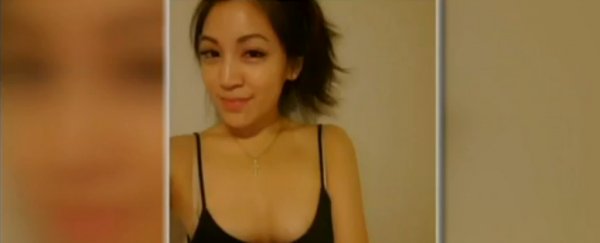Chelsea Ake-Salvacion, a young salon manager in the US, has died in a cryotherapy accident, with her body found last week after spending 10 hours inside a chamber that blasts out air as cold as -151 degrees Celsius.
Cryotherapy was originally developed to help athletes treat sore muscles, but it's recently become popular as a supposed weight loss and beauty tool, promising to burn calories and reduce inflammation by freezing skin for just a few minutes at a time. Twenty-four-year-old Ake-Salvacion, who ran the Rejuvenice salon in Las Vegas, is believed to have entered a machine alone after hours without turning it off, and died within minutes.
Ake-Salvacion was found the next morning inside one of the full-body cryotherapy machines, which she had been praising to the Las Vegas Review-Journal just a few days before her death.
What makes Ake-Salvacion's death even more tragic is that there isn't much evidence to support whole-body cryotherapy (WBC), even for its original purpose of reducing sports injuries - and there's certainly not any replicable peer-reviewed evidence to suggest that it can aid weight loss or promote beauty.
The technology also hasn't been evaluated by the US Food and Drug Administration (FDA) as yet, and last year a review of the research found that there was only weak evidence that WBC can alter inflammatory pathways.
"Until further research is available, athletes should remain cognisant that less expensive modes of cryotherapy, such as local ice-pack application or cold-water immersion, offer comparable physiological and clinical effects to WBC," the authors wrote in the Journal Sports Medicine.
Rejuvenice itself admits that "these products are not intended to diagnose, treat, cure, or prevent any disease".
Still, the practice has become more popular in recent years, with athletes such as LeBron James publicly incorporating it into their daily routines, and plenty of media outlets giving the fad a try for weight loss and beauty purposes.
Usually the therapy is given with an operator in the room, and the patient's head and neck are left exposed the whole time, even in the full-body machine. The Rejuvenice website explains: "All devices are equipped with numerous safety features and doors are never locked, which allows clients to stop treatment instantaneously at any time."
However, it seems for some reason that Ake-Salvacion went into the machine alone. An investigator has reportedly put Ake-Salvacion's death down to an "operator error", although it's not yet clear what the cause of death was, with an autopsy unavailable for six or seven weeks. Her family has told the press that she was frozen in solid ice.
This is an incredibly sad thing to happen to someone so young, but hope that from this death come some better regulations for the use of cryotherapy machines, as well as some awareness of the potential risks of the technology.
